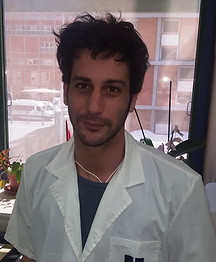
Meet The Team

Lina Mizrachi, MSc, Technician
Lina has been working as a technician at the lab for many years. Her research now involves the deciphering of the role of microRNAs in exosomes: She is developing a new technology to extract small RNAs and large RNAs from exosomes and will then perform next generation sequencing to identify the RNA species in these vehicles. She is currently working as a team with the PhD student Tomer Freemann.

Devorah Olam, BSc, Technician
Devorah is our animal farm specialist. She is responsible for the mouse breeding and teaching of students how to work with mouse colonies. She performs the genotyping of the engineered mouse strains we keep for the group studies. Her long-term experience with animal care enables her to be our daily animal farm trouble-shooter.

Mor Paldor, a PhD student
Mor is investigating the role of IL6 in radiation induced alopecia. She has dissected the molecular and cellular mechanism of this psychologically devastating clinical condition. She has established the relevant model and through this model, was enable to find the role of IL6 and IL17 in the loss of hair following radiation. Currently she in translating her results into potential therapeutic approaches. Her report on this study was submitted for publication.

Tomer Freemann, a PhD student
The mechanism of hepatic carcinogenesis is largely unknown. One potential mechanism of hepatocarcinogenesis is the activation of retro-elements and their movement in the genome. We are interested to investigate whether miRs could be involved in this process and whether exosomes or large vesicles are delivery vehicles for the retro-elements as LINE from cell to the other, and if there are specific miRs which participate in these processes, as negative or positive regulators. Tomer has already established the needed experimental tools in the laboratory and is now performing in vitro studies to answer these questions.

Zohar Shemuelian, a Master student
We have a preliminary result that we have recently reported indicating that miR122 is regulated by TNFa to induce anemia through the regulation of erythropoietin expression. Zohar is investigating two clinical relevant conditions in which TNFa is increasing significantly and is also associated with the development of anemia: Acute Malaria and inflammatory bowel diseases. Zohar is assessing whether in these two conditions the increase in miR122 expression is the cause of anemia.

Maytal Gefen, a PhD student
Both miR122 and miR122* were reported by ourselves as well as by others as tumor suppressor microRNAs. One model that showed their tumor suppressive effect is the miR122 KO mice. These mice develop NASH and then HCC. However, in this engineered mouse both miR122 and miR122* are ablated. It is hard to determine which of the two is responsible for the phenotype. Maytal is generating genetic tools which enable to identify the contribution to the tumor suppressive effect of each separately. The results again will have significant translational importance.

Yael Volman, a PhD student
To combat DNA damage, cells have evolved different strategies, collectively referred to as DNA damage response (DDR). While DDR is essentially a cell-autonomous process that occurs in the nucleus, the cell surface epidermal growth factor receptor (EGFR) has been shown to accelerate DDR. It is known that cell cycle arrest is necessary for effective DNA repair. However EGFR drives cells to cell cycle progression. In my project I am looking for the intersection of this reciprocal communication (the “outside-in” EGFR signal and the “inside-out” nuclear DDR). We show that DNA damage modifies signal transduction triggered by EGFR activation and suggest that these signaling events serve an essential role in synchronizing cell-cycle progression and survival mechanisms. This leads to optimized conditions for cell recovery and DNA damage repair. We hope to provide a plausible explanation for the paradox of this known role played by growth factors such as EGFR in DNA damage repair.

Yamama Abu Mohsen, MSc student
I am working on the project “searching for the regulatory function of miRNAs in liver cancer“. The results are evaluated by different methods (CRISPR-Cas9 system, Antago-miRs, Mimic-miRs) to see the effect of the miRNAs on retrotransposition events and proliferation.